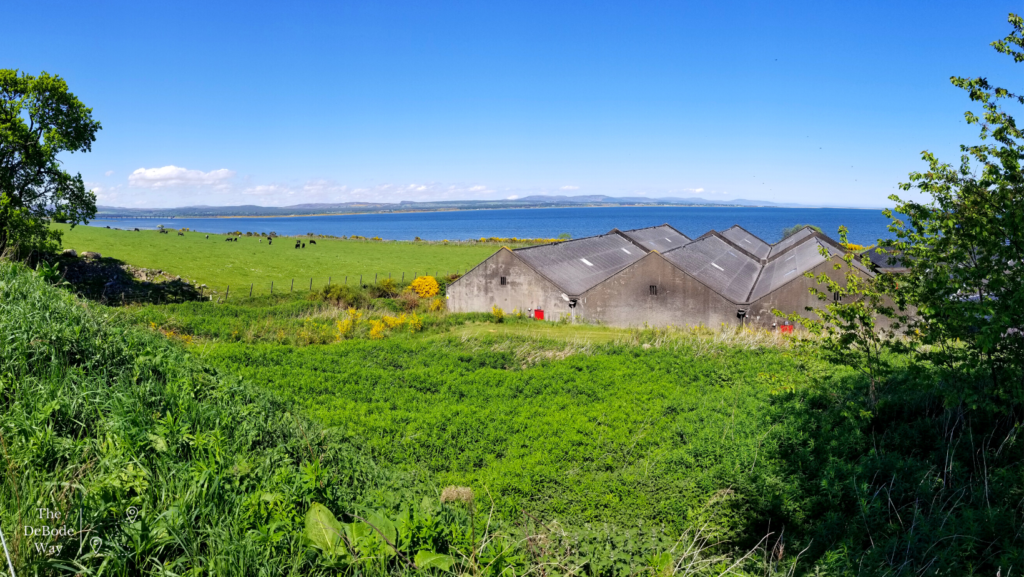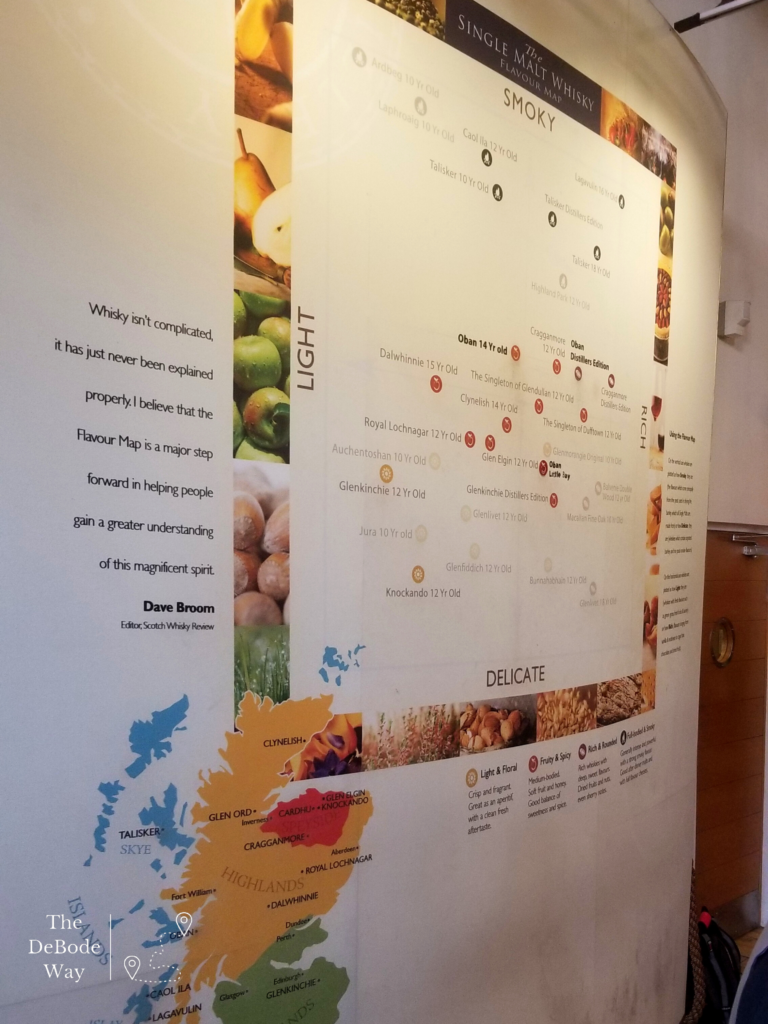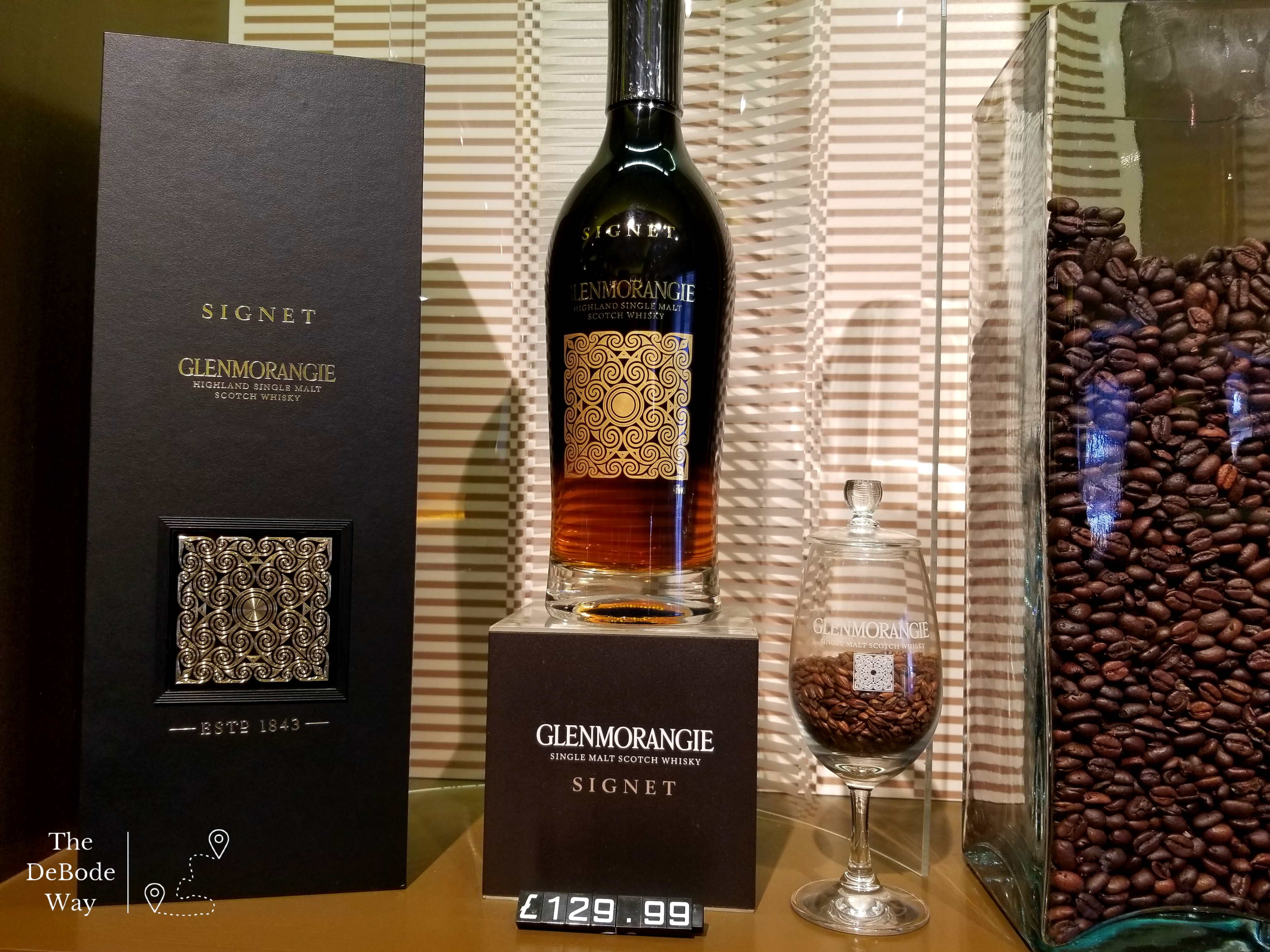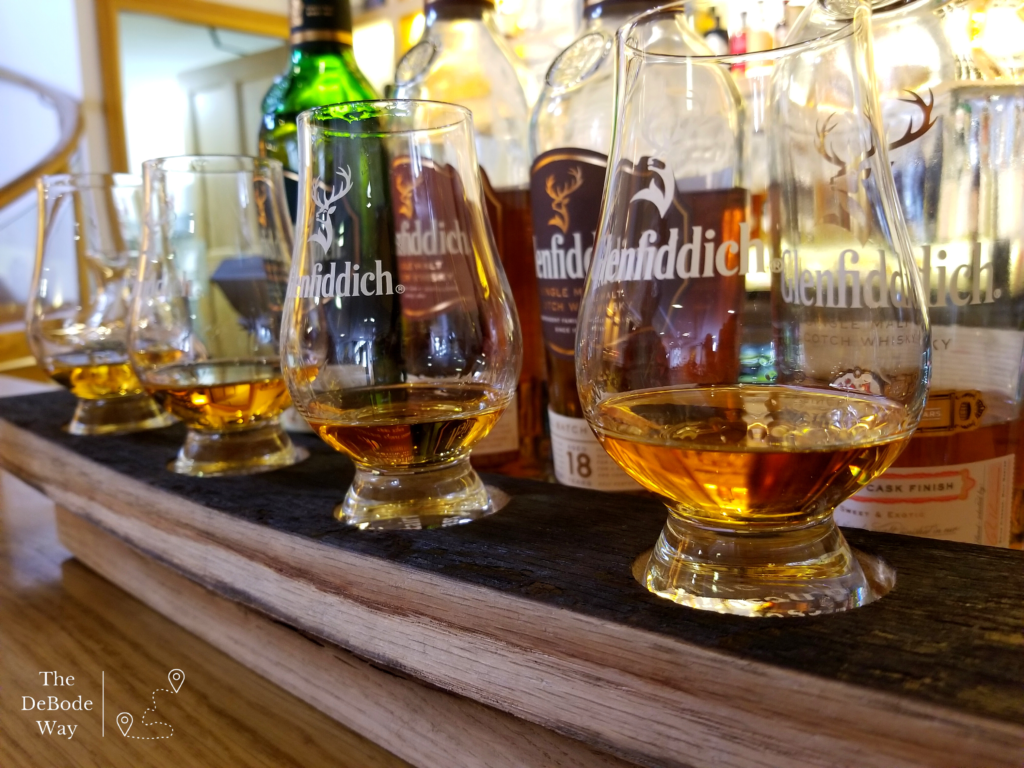It’s no secret we like to travel. But when folks ask about our favorite places and we almost immediately say ‘Scotland,’ plenty of people ask: ‘But why Scotland, of all places?’ If you ask Tasha, she’ll rattle off information about castle ruins, ancient peoples, dramatic wild landscapes, folklore, and on (and on). Jason’s answer? Scotch. Okay fine, the people are pretty great, too.
Here’s the thing, people travel to many European (and other) locations to appease their epicurean interests. France for cheese and butter. Russia for caviar. Italy for pasta and cheese. Spain for tapas. The Greek isles for seafood and olive oil. The United Kingdom for fish and chips. You get the idea. However, lots of folks also partake in the occasional (or more, we aren’t judging) adult beverage, often found alongside those popular food items: France, Spain, and Italy have their wines, Russia it’s vodka, and the UK it’s beer. Sadly, the Scots aren’t exactly known for their cuisine (though we’ve never been disappointed on our adventures), but drink? Now we’re talking. Heck, the drink is named after the country (or is it the other way around?)!
Also referred to as the water of life, Scotch has a storied history and has, in many ways, shaped the present-day culture and geography of Scotland. All that’s terribly interesting, right? Sure. See Tasha for more on this. What’s even more interesting? Glad you asked: the dram itself. So, let’s talk about Scotch.

First, let’s set some parameters. There are plenty of perfectly fine whiskeys produced around the world, from Japan to the US. We aren’t talking about those whiskeys. We’re talking about Scotch whisky (mind you, there’s no ‘e’ in the Scottish version of the word), which, by law can contain only three ingredients (water, yeast, and grain [usually, but not always exclusively malted barley]), must be aged for a minimum of 3 years, and – and this is one of the important distinctions – must be distilled and matured in Scotland. There are other rules (like a minimum ABV of 40%), but these are the big ones.
Moving past the rules, broadly speaking there are two main types of Scotch: blended and single malt. Now hold on: yes, there are others, but most of the time if you’re looking for a recommendation, this is among the first questions you’ll be asked. As the name suggests, single malt scotch comes from a single batch. This is often what you’re thinking about when you talk about Scotch: it’s distilled in one batch and stored in a cask until the master distiller is satisfied with its character. From thence, it’s put in a bottle, sealed, and sold off to regular folks to enjoy. Blended versions, on the other hand, are produced when the distiller blends a variety of single malts together. Legend says these blended versions originated because of the variations in single malts, which can sometimes be unpredictable (one reason why good single malts are often considerably more expensive than their blended cousins), and if they aren’t as palatable as one might prefer, that’s a liability for the distillery. As a hedge, take multiple single malts, blend them together, and now you have a more consistent product to sell to the masses. Neat, right?

– the climate and salt air lends flavor to the final product
Jason tends to prefer the single malts over the blended varieties. Nothing against blended kinds, but there’s something about the single malts that’s hard to beat. When talking about single malt Scotch, there are 5 different regions in Scotland, each having very different characteristics than the others due to the climate, ingredients, and distilling process. In the South, there are the Lowland malts, known for being soft and smooth. Head north and you’ll enter Highland malt territory, which is also the largest region by size. Highland malts are kind of all over the place, mostly because there are so many places in this region, each having a different flavor its spirit is known for. Keep going north and East and you’ll find Speyside malt territory, with whiskys known for being clean and having fruity notes. Off the West coast of Scotland, you’ll find the remaining two regions: Islay, known for fiery and heavily-peated whiskeys (more on this below), and Campbeltown, similarly known for robust, full-bodied Scotches.

When looking for a recommendation, you’re also likely to be asked whether you prefer peated or non-peated whisky. Remember before when we said one of the three legally allowed ingredients in whisky production is the grain? Most commonly, that grain is malted barley (but sometimes other stuff is added, too). By ‘malted’ we mean they get it wet, let the barley sprout, and then dry it before using it to distill whisky. When they dry – or roast – the malted barley, they can do so with or without peat. What’s peat, you ask? Great question. Imagine the picturesque scenery of a bog. Nice, eh? Kidding, kind of. Peat is essentially compressed vegetation that’s fallen to the ground and remained there, in the wet climate, for a while. Folks go out and cut the peat (literally, with a shovel-type tool) and then lay it out to dry in the sun. That peat is then shipped out to barley roasters to use. Other folks burn it in their fireplace, which smells amazing. Sorry, I digress… Back to the roasting process. When they roast the malted barley, if the Scotch is to be peated, they burn the peat to create smoke, which gives the barley a darker color and, yes, a smokey smell. Both characteristics are transferred to the whisky during the maturation process. Longer roasting translates to darker barley (see the picture of Glenmorangie Signet, below – that’s barley in the small glass and coffee on the right, for a comparison) which can impart a coffee-like flavor to the Scotch. If the whisky is to be cleaner (read: not peated), the peat is left out, so the barley has a lighter color and a cleaner, crisper flavor it passes to the drink (like the Glenfiddich, further below). Which one’s better? Yes.

Once you know those two preferences: single malt v. blended and peated v. non-peated, it’s hard to go wrong. We don’t have much experience with blended whisky, but the world of single malts is one we definitely encourage you to explore. Jason likes all kinds but often leans toward the darker, full-bodied, heavily peated Scotches in the cooler parts of the year, and the lighter, brighter, non-peated varieties when the temperatures heat up. Not always, but usually.
To be sure, there are tons of other characteristics you can pick from when selecting your preferred whisky. Cask strength, distiller’s editions, experimental releases, different cask types like sherry and rum, winter editions, and so on. Each of these will add different characteristics to an already great whisky. Not surprisingly, they also tend to increase the price. Also, consider the age of the Scotch: it’s common to find options that have been aged for 8-15 years and all at reasonable prices (expect to spend $60-$80 for a good, ‘entry level’ single malt). But as the whisky gets older, its price increases, sometimes greatly.
Just to make this a little more complicated, how you enjoy the whisky can also change its character. Jason prefers to drink his Scotch just the way it comes, with no additions or alterations. At the bar, this is referred to as taking your whisky either ‘straight’ or ‘neat’. Find the flavor a little too intense? No worries, try adding a drop or two of water. And by ‘a drop or two,’ I really do mean a drop or two. No need to dilute it further until you try it. Still too strong? Add a few more drops of water. Seriously: at most distilleries in Scotland, the tasting rooms and bars will have a glass of water with a dropper in it so you can add a drop or two at a time. Totally changes the aromas and flavor of the whisky.

Oh, and if you’re looking for something to add to a mixer, this isn’t that. There are other whiskeys you can find for that purpose. After all, if you’re going to spend this kind of time and money on a good single malt (or blended) Scotch whisky, adding other stuff to something that has been perfected over centuries of tradition seems…wrong.
In the end, the important thing is to try new things and see what you like. Kinda like traveling.
What’s your favorite whisky (or whiskey) or other adult beverage? Let us know!




